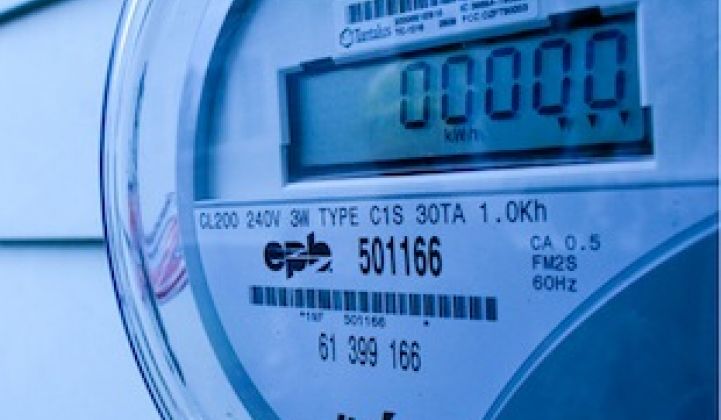From an industry analyst perspective, it’s clear that many companies that traditionally have been defined as metering or AMI vendors are evolving and expanding their capabilities. The key question is whether this evolution is occurring proactively or as a means of self-preservation.
A little more than a week ago, I had the opportunity to attend Itron Utility Week, an event that brought together experts from the utility industry, including both Itron customers and non-Itron customers. Two days of attending panels and product demonstrations left me fairly confident that Itron's transformation reflects foresight that will pay dividends. Outside of the company’s revised strategy, which revolves around the mantra of “being resourceful," several other themes emerged during the conference.
AMI Driving Reliability Improvements
In North America, advanced metering infrastructure (AMI) has matured significantly since the initial surge of deployments that followed the $4.5 billion of U.S. stimulus funding. For utilities that have already deployed AMI and those looking to gain regulatory or board approval, a positive return on investment requires realization of additional benefits beyond the automation of meter reading, including improving reliability and service quality.
In many cases, this has led to the surgical deployment of smart meters alongside networking infrastructure, as well as hardware capable of supporting multiple applications like distribution automation, as shown in the recent Itron/Cisco pilot currently underway at National Grid.
In addition, a recent report by GTM Research illustrates that the use of AMI data for outage management and voltage optimization constitutes two of the leading secondary applications of AMI in North America. One use case that has generated significant utility interest has been that of conservation voltage reduction (CVR), which is a method of strategically lowering the voltages of select distribution feeders to bring efficiency gains, improved power factor, and reduced stress on assets like distribution transformers.
Historically, CVR has been accomplished through model-based approaches (typically line drop compensation). But now that more than one-third of utilities in the United States have AMI systems in place, CVR has evolved to incorporate the end-of-line voltage sensing capabilities of smart meters. I had the opportunity to listen to Avista’s Curt Kirkeby discuss many of the benefits the utility has realized through AMI-based CVR.
In one example, a single feeder at Washington State University was consistently falling below service voltage levels during peak periods. By selectively sampling voltages at five-minute intervals through its OpenWay network, Avista was able to identify the problematic feeder and is strategically deploying a battery storage system to remedy the voltage issues.
Industry Collaboration
Itron is no stranger to partnerships. Development using Cisco’s reference model for IPv6 networking has already been tremendously successful for the company at key deployments, including BC Hydro and a smaller pilot at National Grid in Massachusetts. However, the most interesting development at the conference was a presentation by Itron’s Tom Johnson and Ethan Boardman of Alstom discussing the integration of Itron and Cisco’s distributed processing capabilities, which the company refers to as “layered intelligence,” with Alstom’s Integrated Distribution Management System (IDMS).
In addition to validating distribution connectivity and GIS models, AMI sensing information can be used in combination with SCADA information to deliver a true integrated volt/VAR control solution that includes power flow modeling and simulation capabilities. Itron is also working with S&C Electric and Alstom to integrate distributed energy resources like community energy storage.
Solar and Microgrid
The topics of solar (particularly distributed PV) and microgrids generated a substantial amount of conversation amongst attendees. SMUD’s Rick Codina gave a particularly insightful presentation that focused on redefining rate structures and strategically deploying energy storage to reduce peak load and better match solar output with peak periods. SMUD’s solar output typically peaks around 12:00 p.m. -- about four hours before the overall system peak. In turn, the Sacramento-based utility has strategically deployed fifteen Silent Power/Saft residential energy storage systems and three Saft community energy storage systems at its Anatolia solar subdivision, a move that has successfully shifted the peak demand.
While Utility Week indicated that significant headway has been made in solving many of the technical challenges associated with integrating distributed energy resources, one question that remains unanswered is the degree of impact these initiatives will have on utilities’ business models. Regardless of when and how this question is answered, Itron appears to be embracing utility evolution as a set of new business opportunities. In addition to the traditional focus areas of electricity, water and gas, the company expressed an intention to expand beyond these traditional silos, including through smart city initiatives with companies like Microsoft, as well as more traditional applications behind the meter.



